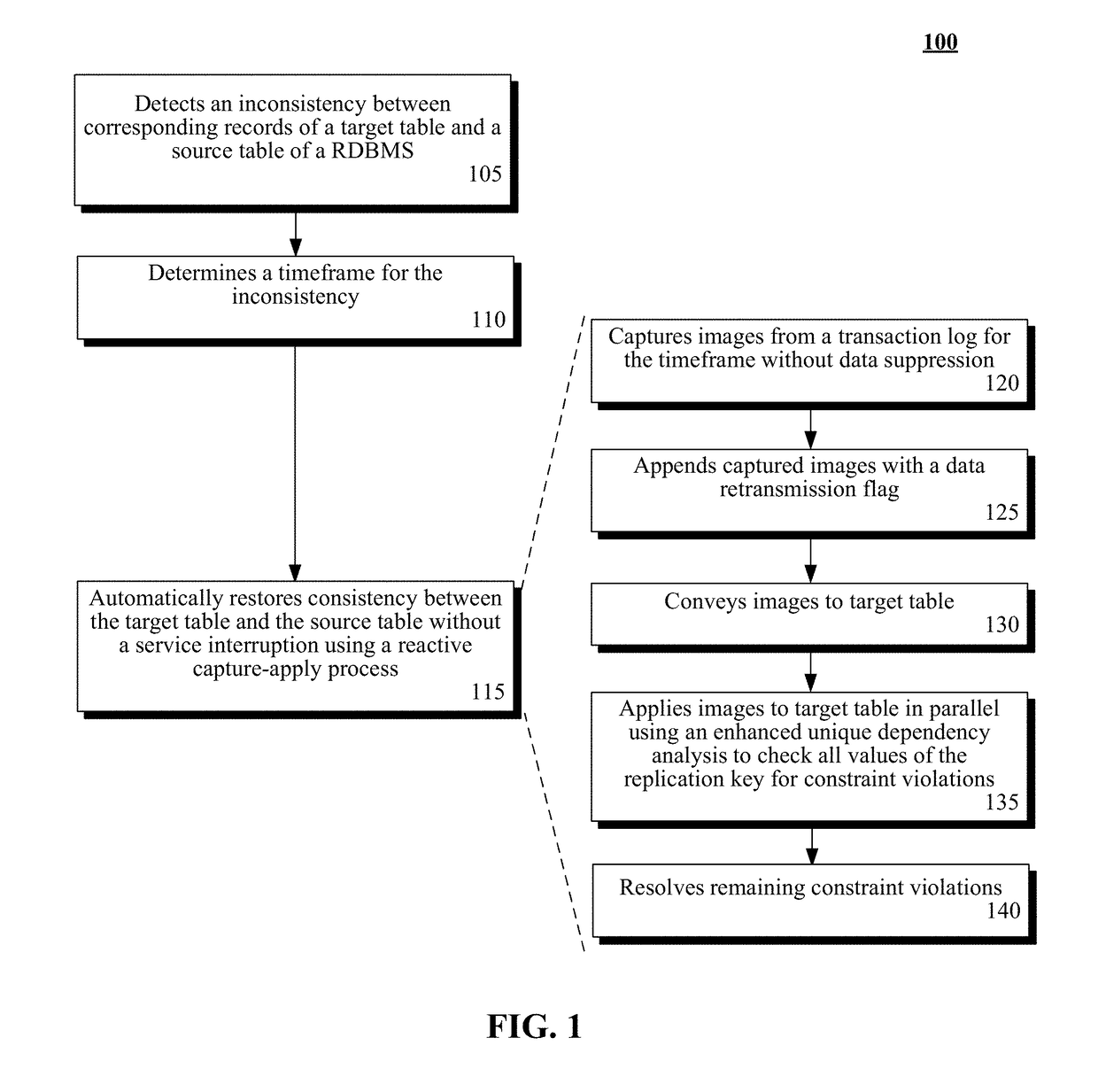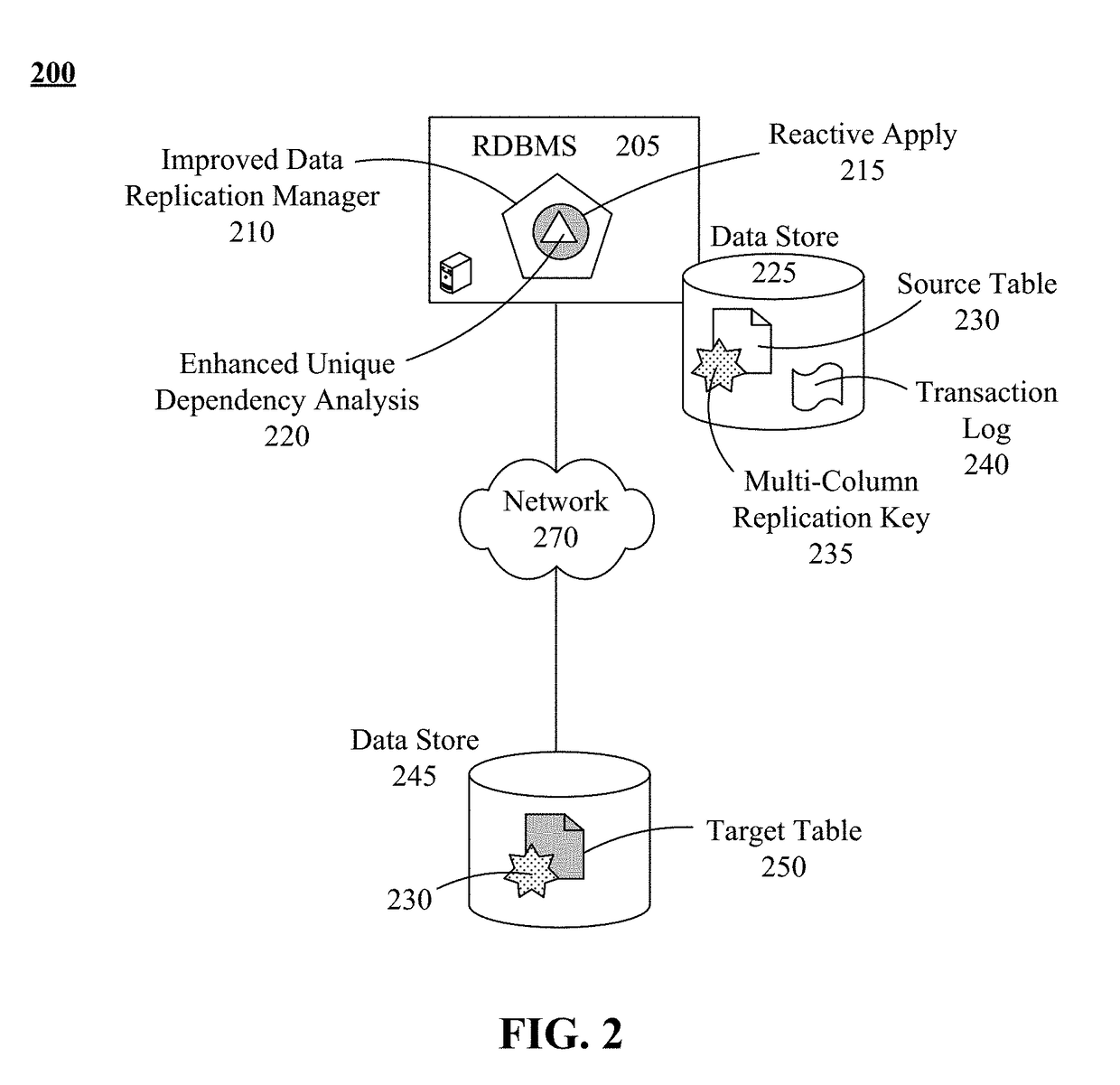Automatically restoring data replication consistency without service interruption during parallel apply
a data replication consistency and parallel application technology, applied in relational databases, database models, instruments, etc., can solve problems such as unresolvable differences between a source and a target, complex challenges that occur with rdbms table replication, and existing parallel application approaches that cannot handle data tables
- Summary
- Abstract
- Description
- Claims
- Application Information
AI Technical Summary
Benefits of technology
Problems solved by technology
Method used
Image
Examples
Embodiment Construction
[0011]The present invention discloses a solution for performing data replication between a source and target table having a multi-column replication key with parallel apply to restore consistency without a service interruption. The source and target tables can have multiple unique constraints in addition to the replication key, and the replication process within which a possible consistency abnormality is detected can be a parallel apply based process. In other words, the target can be a fuzzy copy, or an initial copy of the data that is not point-in-time consistent. The fuzzy copy is not a snapshot copy. This can occur when data is read to create the fuzzy copy while the data is being updated. The update process can be an asynchronous one, complicating the restoration of consistency. Upon detection of an inconsistency between records of the source and target tables (e.g., the fuzzy copy), a capture-apply process can determine a timeframe that encompasses the inconsistent records an...
PUM
 Login to View More
Login to View More Abstract
Description
Claims
Application Information
 Login to View More
Login to View More - R&D
- Intellectual Property
- Life Sciences
- Materials
- Tech Scout
- Unparalleled Data Quality
- Higher Quality Content
- 60% Fewer Hallucinations
Browse by: Latest US Patents, China's latest patents, Technical Efficacy Thesaurus, Application Domain, Technology Topic, Popular Technical Reports.
© 2025 PatSnap. All rights reserved.Legal|Privacy policy|Modern Slavery Act Transparency Statement|Sitemap|About US| Contact US: help@patsnap.com



